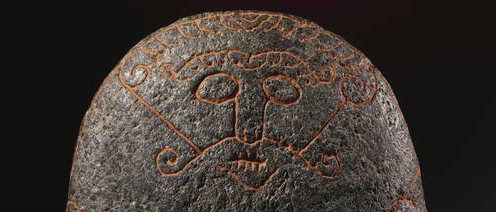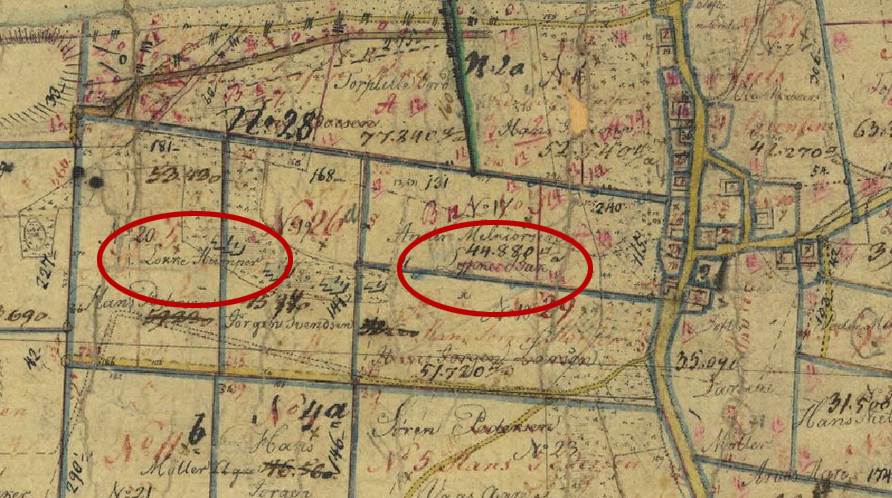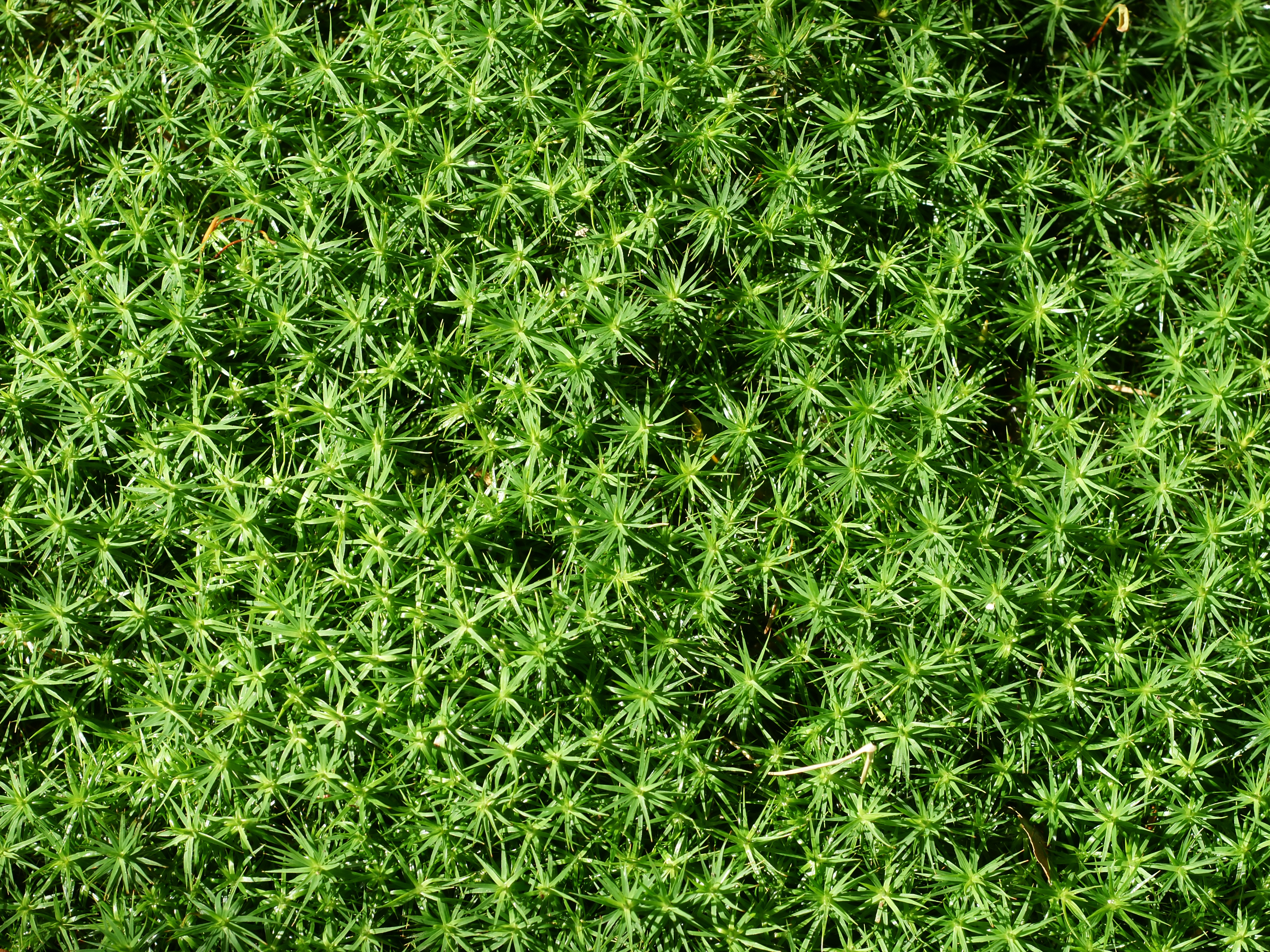Lokke-names – and an alluring interpretation
In the Danish landscape there are many place-names showing traces of old heathen gods such as Odin, Freyr, Freyja, Njord, Balder and – in particular – Thor. Whether or not there are also traces of the half-god Loki is controversial.

The god Odin is found for example in place-names such as Odense, Vojens and Vonsild. Freyr or Freyja are also found in several names in Frø-, and Thor appears in hundreds of Danish place-names which have a first element originating in personal names that themselves contain the first element Thor-, including personal names such as Torben, Thorbjørn, Torsten, Thorkild, Thorleif etc.
Otherwise uncertain are the cases where there may be traces of the half-god Loki in Danish place-names. For that reason we shall try to look more closely at compounds with the first element Lokke or Lok.
Most of the place-names with the first element Lok(ke) are to be found among old names of natural features and field-names, and many of these have long since dropped out of use. In Rørvig in north-west Sjælland we find the marsh name Lokkemose in the Nørrevang field east of the Dybesø lake. Today we meet it primarily in the modern road-name Lokkemosevej.
The name of the marsh is first recorded in the village land register dated 1682, where it is found as the first element of the names Lokkemose Stykkerne (in the old-fashioned written form Locke moese støckerne) and Lokkemose Vretters Agre (Locke moese wretterß agre). Exactly on the other side of the entrance to the Isefjord we find the same name-element: On a field map from 1795 there can be seen two names, Lokke Humper and Lokke Bak and today the element appears again in a road-name: Lokvejen.

Who or what is it that is alluring us?
But what does the first element Lok(ke) mean? A private individual has wondered about this and made enquiries about it to the Name Research Archive, partly with reference to the following story that was published in the bulletin Prøven (December 2013, 10th year, no.41, p.30), published by Frederiksværkegnens Historiske Forening:
"In earlier years the waters off Spodsborg were very dangerous and in the course of time many ships have been stranded here. It is related that the inhabitants of Kikhavn in olden days had a good fringe income in connection with these strandings; but that they should actually have enticed ships to go aground off the coast is probably a tall story, even though the name "Lokvejen" points in the other direction."
The local legend will thus explain the first element of the name as the verb lokke 'to entice' in the meaning to entice someone to approach one in a disingenuous way. This interpretation is, however, less convincing, and not only as a concern for the reputation of the inhabitants of Kikhavn!
There are several place-names in Denmark with – apparently – the same element. It is often the case, however, that the first elements have different origins and that the names in the course of time have been re-interpreted by language users. We shall now look rather more closely at this matter in order to point to a likely interpretation of the first element in Lokkebakken and in other field-names and nature-names.
The alluring hair?
It is not only in field- and nature-names that the first element Lokke occurs. The village Lokkerup which was situated near Snekkersten in northern Sjælland, is mentioned in 1497 (Lockerop) as belonging to the convent of Esrum. The settlement Lockarp, which lies south of Malmø in Skåne, which belongs to the medieval Danish linguistic area, is mentioned as early as in 1283 ((in) Lokkæthorp).
These two names are composed of the same elements. The second element is identical with the Old Danish substantive thorp, which frequently has a masculine personal name as first element, and in Lokkerup and Lockarp it is interpreted as the Old Danish masculine personal name Lokki, originally a by-name with the meaning "with curly hair".
This interpretation is kept in the interpretation of several nature-names, e.g. Lokager in South Jutland east of Skærbæk (Danmarks Stednavne, vol. 5, p. 105) and Lokbjerg situated south of Sønderborg on the island of Als (DS vol. 7, p. 105). Lok is also found as a by-name, which is identical with the masculine substantive lok, which in the older form of the language occurs in both a one-syllabled form and a two-syllabled form, Lokke, with the meaning 'tuft, wisp' or 'bunch' (of straw or the like) – or simply 'hair of the head'. Generally, however, it is less obvious to look for interpretations as personal names in field- and nature-names, unless one is concerned with an explicit genitive form.
The first element Lok(ke) can in the same way as with Old Danish thorp become changed in form and therefore unrecognizable in modern forms, as for example in the place-name Lovtrup, which is the name of a settlement south-west of Åbenrå (DS vol. 6, p. 352). The oldest form of this name is found in King Valdemar's cadastre 1231 (Lochtorp) and the first element was originally interpreted as either the masculine name Lokki – or as the name of the cunning god in its Norse form). The nature-name Lokkesdal between Fjerritslev and Blokhus (DS vol. 21, p. 177) has also been associated with this interpretation together with the Bornholm farm-name Lokkegård but here this has been considered less likely (DS vol. 10, p. 204).
The Jutland Loke
From a purely linguistic point of view the god's name is a possibility in the Jutland place-names, since the god's name in the Jutland dialect developed to Lokke. It is a different matter with eastern Denmark: the old k-sound is weakened in modern Standard Danish to a g-sound and it eventually almost disappears as in the substantive låge 'gate' (Norse loka). When we in modern Danish write Loke and pronounce the name of the god with a clear g- sound (written k), this is because of the National romantic 19th century reintroduction of Old Norse names in reconstructed Danish linguistic forms – and not as a natural development of the name over time.
This sound development ought to be able to be traced in older forms of place-names containing the god's name Loke. Since the god's name cannot be found with certainty in any Danish place-name, this interpretation must be assumed to be the less likely one.
Mythological tales about the god under the name "Lokkemand" doubtless play a role with respect to certain natural phenomena reflected in such expressions as "Lok(k)e is sowing oats" and "Lokkemand is driving his goats" used of special flickering light phenomena, and such natural phenomena may also be reflected in place-names. It has for example been suggested as an explanation of the first element in the watercourse name Lokkedam, which denoted a small pond lying between Hanstholm and Thisted (Danske sø- og ånavne, vol. IV, p. 340).
Alluring plants
The first element in the above-mentioned Lovtrup has most recently been interpreted as the concrete substantive lok(k)e referring to an assumed "tufty" vegetation at the site (Danske stednavne (2008), p. 184). As already mentioned lok is a masculine substantive (en lok), but a neuter word (et lok) is found in Old Norse in the expression: "ganga yfir sem lok yfir akra" ,"spread itself like weeds over the field" (see ONP).
In the mythological legends the god Loke (or Jutlandic Lokke) is associated with popular plant-terms, chiefly used for specifically weeds in cornfields. "Lok(k)e's grass" denotes vindaks (Apera spica-venti) and "Lokkes havre" denotes both flyvehavre (Avena fatua) and the plant called jomfruhår (Polytricium commune ). Jomfruhår grows in damp areas and the plant's curly appearance can have been the reason for the name Lokkemose in Rørvig and perhaps also to the above-mentioned Lokkedam. Compounds with bæk 'brook' and kær 'pond, pool' may also be related to this plant.

The interpretation of the first element Lok(k)e in Danish nature-names as identical with the substantive lok(ke) referring to the appearance of vegetation in a local area is definitely more likely to be correct than the Old Danish personal name Lokki or the god's name Loke.
In the cases where the first element in nature- and field-names are taken to be the god's name, it is more likely to be more recent formations or of reformations of other original first elements. As for example in Lokeshøj, which is the name of a grave-mound facing out to Øresund between Skodsborg and Vedbæk. The first element in this name was originally a family-name Lugge borne by an owner (DS vol. 25, p. 314).
The mythological legend associated with Lokkebakke near Kikhavn pointed at the verb lokke 'entice'. It is also possible that the verb forms part of some younger formations, as for example the house-name Lokkeborg named in 1720 (Locheborg huus). The house lay by Kirkerup south-east of Slagelse and the name with the second element borg is probably to be considered as a pejorative and ironical use of a modest house (DS vol.24. p. 133).
It can be tempting to re-interpret older place-names as precisely this verb, when the names both structurally and significantly give meanings to language users familiar with compounds such as lokkedue 'decoy', lokkemad 'bait' and lokkemidler 'bait, lure, allurement' in the modern language. In the cases Lokkebakke and Lokkehumper it is a tufty appearance of the vegetation that seems to be a much more likely interpretation.
Rikke Steenholt Olesen
Contact
Rikke Steenholt Olesen is associate professor at the Name Research Archive, Department of Nordic Studies and Linguistics
rikke.steenholt.olesen@hum.ku.dk
+45 3532 8564
Words in field-names
Words that are used to describe plots of land in fields are very numerous but their meanings have been more or less lost in modern Danish.
A vrette for example is a small piece of land that forms a part of a large plot of land. A humpe is a small piece of land, that lies separately from the owner's other fields and the word pointed originally to the fact that it had been cut away from a whole, e.g. en humpel Brød.
The element bak in Lokke Bak is, however, not a word for a field but simply a shortened form of the substantive bakke 'hill'. Lokkebakke as the name is to be written today, denotes a quite small elevation in the ground.
